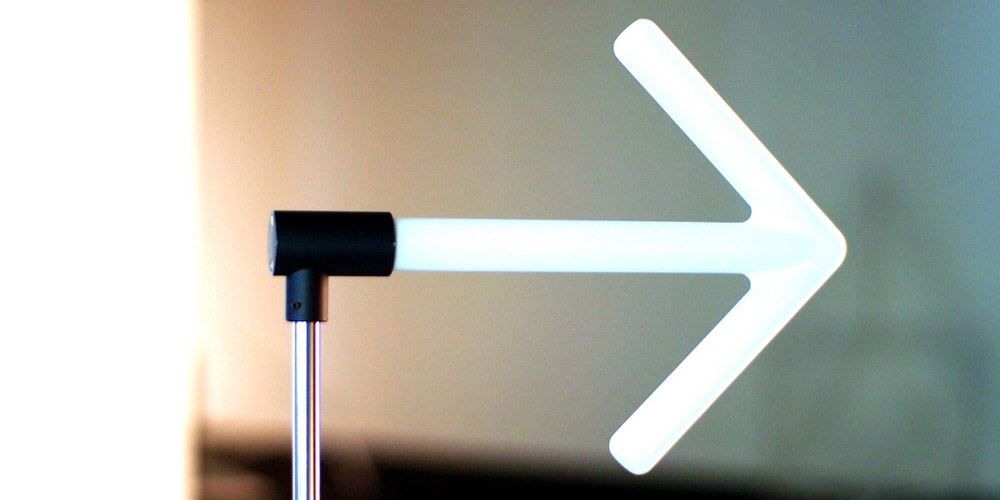h.o (JP)
THU September 4 2014, 9 AM - 5:30 PM, 7 PM - 11 PM
FRI September 5 2014, 9 AM - 5 PM, 7 PM - 11 PM
SAT September 6 2014, 9 AM - 4 PM, 7 PM - 11PM
SUN September 7 2014, 1 PM - 3:30 PM
MON September 8 2014, 11:30 AM - 5:30 PM
Mariendom
The Japanese group h.o launched their Momentrium series to collect moments with the help of illuminated arrows. Each installation in the series refers to facts and circumstances in the here and now—specifically, to those, like the orbit of the planet Mars, which we can’t see but are deeply rooted in our consciousness. What all these works have in common is a universal sign: an arrow pointing in a particular direction.
Momentrium #1 core
In Momentrium #1 core, a 2012 installation, the illuminated arrow points to the Earth’s core. Everyone knows the Earth has a core, but to whom does this fact actually seem real? Momentrium #1 core serves, quietly and unobtrusively, as a bridge between knowledge and reality, and does so with utmost accuracy, since the installation also takes into account geographical factors such as precise viewer location, altitude above sea level, and the Earth’s rotation that can exert minute influences on the exact line direct to the Earth’s core.
Momentrium #2 future
Momentrium #2 future, the second installation in the Momentrium series, refers from the present moment to the observer’s future. Depending on the individual’s ascertained position within the installation space, the arrow constantly points in the opposite direction. Anyone attempting to follow the arrow quickly establishes the fact that it immediately points to the opposite position, which is h.o’s way of saying that only in our imagination is the future a forward linear projection of the present, whereas the only way to get to the future is to proceed from one moment to the next.
Momentrium #3 mars
In the third work in this series, h.o focuses on Mars. An illuminated pointer mounted on a movable robotic arm points to the Red Planet’s exact current location in the sky. Occasionally, the robot interrupts its solar system scouting activities and makes a circular motion representing Mars’ complicated orbit. This work staged in the context of Linz is clearly intended as a respectful reference to astronomer Johannes Kepler. After all, he was the one who discovered that planetary motions conform to physical laws, and thereby raised questions having to do with humankind’s conception of self.
h.o
Naohiro Hayaishi, Hideaki Ogawa, Emiko Ogawa, Takeshi Kanno

